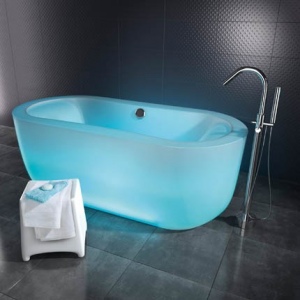Whether it’s an antique armoire that has been in your family for generations or a lovingly crafted dining room table you built yourself, some furniture is irreplaceable. Moving the standard boxes of household goods is fairly straightforward; with some friends or a moving company, you can have these items loaded and ready to go within a few hours. Moving custom furniture is more of a challenge, especially if the piece is fragile by nature. A hand-wrought chandelier or a custom-built gaming computer needs even more special care than a sturdy wooden chest.
When moving, you have two options: hiring professionals or doing it yourself. Both possibilities have their advantages and drawbacks, so follow these guidelines to choose the move that’s right for your precious cargo.
Hiring a Service
Professional movers give you the peace of mind that comes with a full-service operation. Movers know all the details about how to wrap and pack fragile items. If this is your pick, ask some questions before moving day to ensure the safety of your most important pieces.
Moving companies usually have insurance available, and while no amount of money can replace a custom-built item or rare antique, it can defray repair costs if an accident should happen. Ask about the types of insurance available and invest an extra few dollars up front for greater security during the move. The U.S. Department of Transportation has some excellent advice on levels of liability and describes the difference between full value protection and released value insurance.
To save on moving expenses, some homeowners pack and crate items themselves and have the movers do the heavy lifting. However, packing for yourself could have ramifications for liability claims later. Professional movers also have more tools at their disposal for packing and securing items even if they’re bulky or oddly shaped. You might wonder how you’re going to wrap your great-uncle’s prized moose head, but specialized movers can custom-build crates and boxes for you.
If you choose to let the moving company handle your furniture from start to finish, ask a few questions about the packing process. What kind of crate will the company use? What sort of padding will protect the items inside? How will the piece be transported? Discuss which items are most valuable or delicate with your movers so they can place these pieces in the most secure spots in the truck or shipping container. Movers care about giving you the best possible service, so they welcome your guidance.
Moving Your Own Furniture
Doing it yourself is always a possibility, especially if you’ve moved before and are used to the process. You already know to enlist the help of friends and family early to make sure you have plenty of muscle on hand, but the move begins well before anyone arrives. Before anything moves, you need to pack.
Diane Schmidt of About.com recommends taking apart anything that can be removed. Unscrew the legs from tables, chairs, sofas and other items whenever possible and wrap the legs separately. Keep the hardware together and tape it to the underside of the item; that way, it can’t get lost or misplaced and will allow you to assemble the piece quickly when it reaches its new home.
Moving blankets are essential for protecting antique or custom-built furniture from scrapes and scratches. When wrapping delicate or irreplaceable furniture, there’s no such thing as too many protective blankets. Those thick blankets are for more than wrapping, according to Regina Yunghans with Apartment Therapy. She learned a great trick from a professional mover: Use layers of blankets as impromptu sleds and ramps. You’ll avoid having to lift and potentially drop heavy or fragile items, and you’ll save wear and tear on your back.
Depending on what you’re moving, you might be better off with something more substantial than a blanket. A fragile chandelier, for example, needs the extra protection of a crate. If you’re handy, you can build your own; otherwise, a moving supply store or shipping company can provide you with the raw materials. When filling a crate, use enough packing material to hold the item securely on all sides. Your cargo is subject to vertical movement as well as lateral motion on a long trip, so consider the top and bottom of the crate too.
Moving Guidelines
No matter how you decide to move, take these steps for an easier transition of your priceless furniture to your new home.
- Plan your route before your move.
- Photograph items before you move for liability protection and easier assembly.
- Use cushions and pillows from upholstered furniture as padding for delicate pieces.
- Treat wooden furniture to a dusting and waxing before the move; a layer of wax can help protect against small scrapes.
Featured images:
License: Creative Commons
image source
-Brandon’s a logistics and shipping writer working with Crater & Freighters





